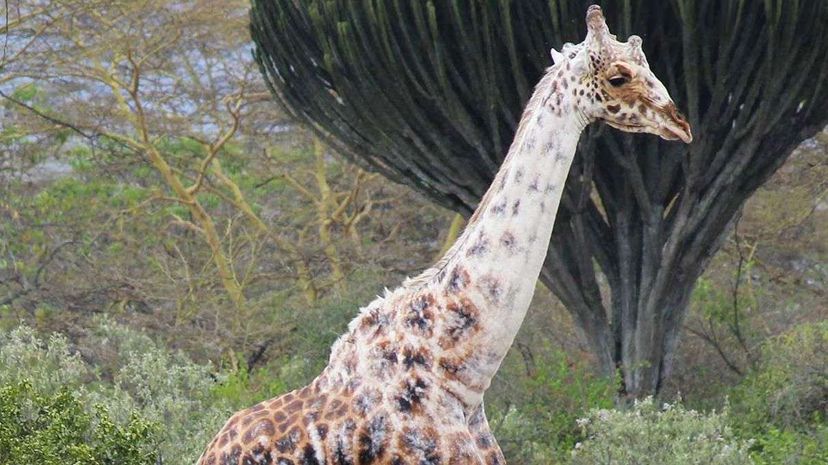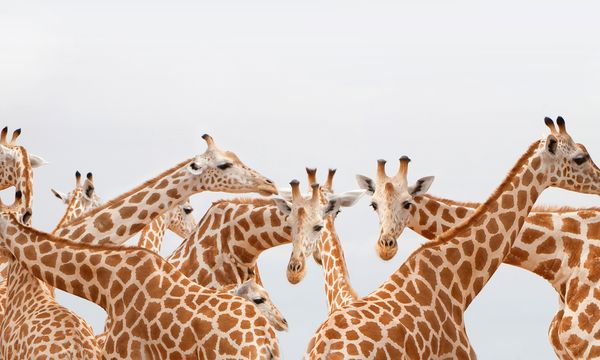
A leopard can't change its spots, but it sure seems like a giraffe can. And this has scientists scratching their heads over a color-changing Rothschild's giraffe roaming a nature reserve in Kenya.
Over time, the male giraffe's skin has been slowly losing its pigment. What began as a few white patches has spread to become an increasingly white coat covering at least one-third of the animal's body.
Advertisement
The metamorphosis wasn't obvious at first. The Rothschild's giraffe already is known for its distinctive "stockings," a term used to describe cream-colored legs devoid of any markings. It's one of the most immediate ways to tell the subspecies apart from relatives of the eight other sub-species to which a giraffe can belong — Nubian, reticulated, Kordofan, Maasai, South African, West African and Rhodesian — that have tell-tale marking that reveal their family groups.
In 2009, when Zoe Muller, a wildlife biologist and founder of the research and conservation group Rothschild's Giraffe Project, began photographing the male giraffe, nothing appeared amiss. Soon after snapping the first photos of the animal, however, a few white spots appeared on the giraffe's coat. Muller continue to document the giraffe, taking more than 430 photographs of it over the past seven years.
The white patches on the giraffe's coat continued to spread, something that had never before been documented, Muller told New Scientist in an interview. Her findings were published in the May 2016 issue of the African Journal of Ecology.
Initially, Muller wondered if a skin condition was to blame for the giraffe's faded appearance. She noticed the animal spent an excessive amount of time standing in large bushes and using the branches to scratch his head and neck, which is where the color fade first became obvious. If an infection were to blame, it could spell disaster for the Rothschild's giraffe population, which is at a critical level — fewer than 1,100 Rothchild's giraffes live in the wild.
It was eventually determined the giraffe had a skin condition known as vitiligo that causes skin to lose its pigment. Although it hadn't been recorded in giraffes before Muller's discovery, vitiligo does affect other species of hoofed mammals, ranging from buffalo to Arabian horses. It's also the same skin-lightening condition experienced by the late Michael Jackson.
For the Rothschild's giraffe, a life without spots to use as camouflage would be a short one. The inability to effectively hide from predators would be clear disadvantage. Luckily for this increasingly white giraffe, Muller said there are rarely predators in the Kenyan nature reserve it calls home.
Advertisement
